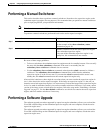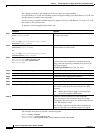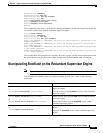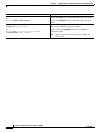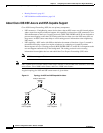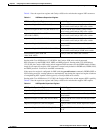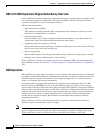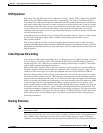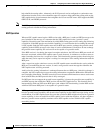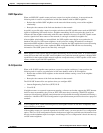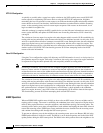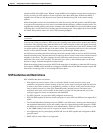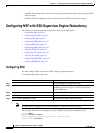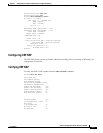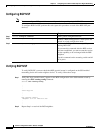
9-5
Software Configuration Guide—Release 15.0(2)SG
OL-23818-01
Chapter 9 Configuring Cisco NSF with SSO Supervisor Engine Redundancy
About NSF with SSO Supervisor Engine Redundancy
NSF Operation
NSF always runs with SSO and provides redundancy for Layer 3 traffic. NSF is supported by the BGP,
OSPF, IS-IS, and EIGRP routing protocols and is supported by Cisco Express Forwarding (CEF) for
forwarding. The routing protocols have been enhanced with NSF-capability and awareness, which means
that routers running these protocols can detect a switchover and take the necessary actions to continue
forwarding network traffic and to recover route information from the peer devices. The IS-IS protocol
can be configured to use state information that has been synchronized between the active and the
redundant supervisor engine to recover route information following a switchover instead of information
received from peer devices.
A networking device is NSF-aware if it is running NSF-compatible software. A device is NSF-capable
if it has been configured to support NSF; it rebuilds routing information from NSF-aware or
NSF-capable neighbors.
Each protocol depends on CEF to continue forwarding packets during switchover while the routing
protocols rebuild the Routing Information Base (RIB) tables. After the routing protocols have converged,
CEF updates the FIB table and removes stale route entries. CEF then updates the line cards with the new
FIB information.
Cisco Express Forwarding
A key element of NSF is packet forwarding. In a Cisco networking device, packet forwarding is provided
by Cisco Express Forwarding (CEF). CEF maintains the FIB and uses the FIB information that was
current at the time of the switchover to continue forwarding packets during a switchover. This feature
reduces traffic interruption during the switchover.
During normal NSF operation, CEF on the active supervisor engine synchronizes its current FIB and
adjacency databases with the FIB and adjacency databases on the redundant supervisor engine. Upon
switchover of the active supervisor engine, the redundant supervisor engine initially has FIB and
adjacency databases that are mirror images of those that were current on the active supervisor engine.
For platforms with forwarding engines, CEF keeps the forwarding engine on the redundant supervisor
engine current with changes that are sent to it by CEF on the active supervisor engine. The forwarding
engine can continue forwarding after a switchover as soon as the interfaces and a data path are available.
As the routing protocols start to repopulate the RIB on a prefix-by-prefix basis, the updates cause
prefix-by-prefix updates to CEF, which it uses to update the FIB and adjacency databases. Existing and
new entries receive the new version (“epoch”) number, indicating that they have been refreshed. The
forwarding information is updated on the forwarding engine during convergence. The supervisor engine
signals when the RIB has converged. The software removes all FIB and adjacency entries that have an
epoch older than the current switchover epoch. The FIB now represents the newest routing protocol
forwarding information.
Routing Protocols
Note Use of the routing protocols require the Enterprise Services Cisco IOS Software image for the Catalyst
4500 series switch.
The routing protocols run only on the active supervisor engine, and they receive routing updates from
their neighbor routers. Routing protocols do not run on the standby supervisor engine. Following a
switchover, the routing protocols request that the NSF-aware neighbor devices send state information to



